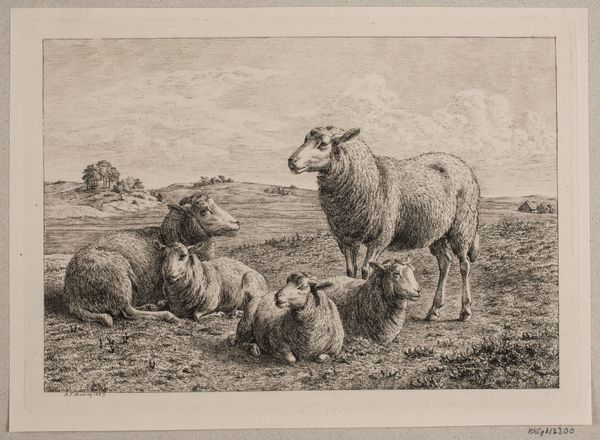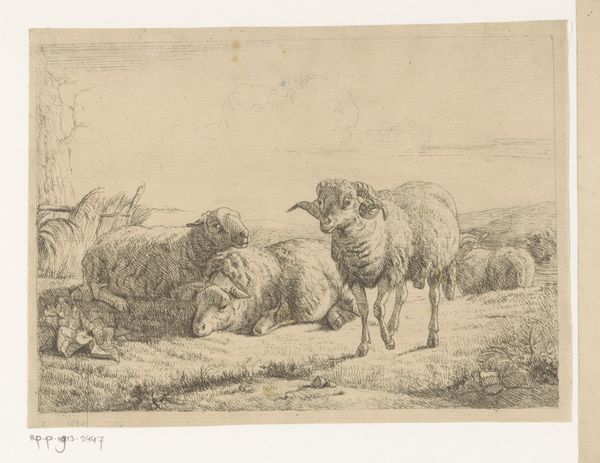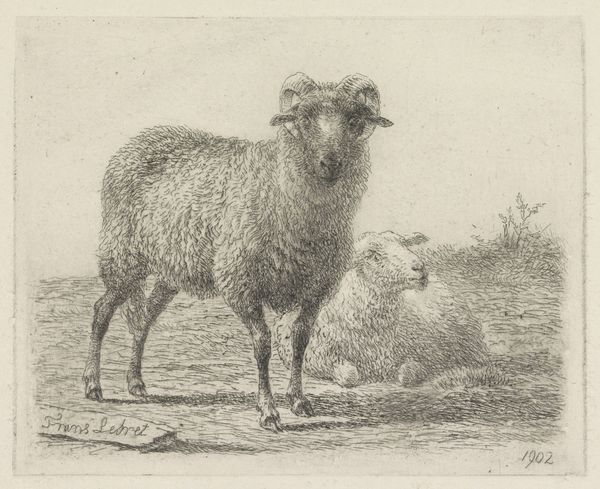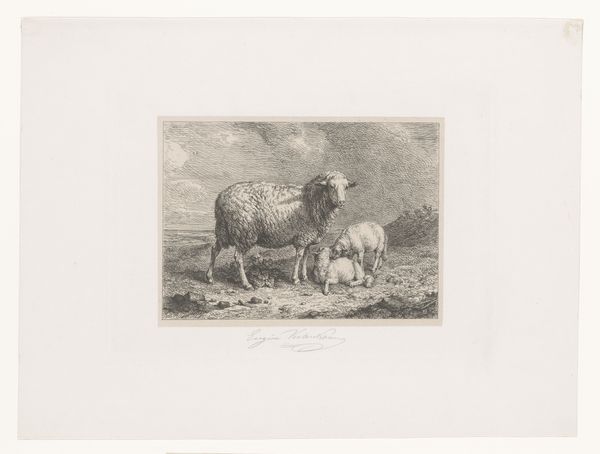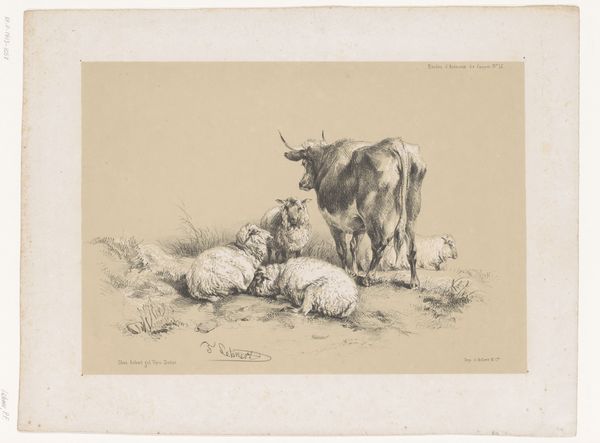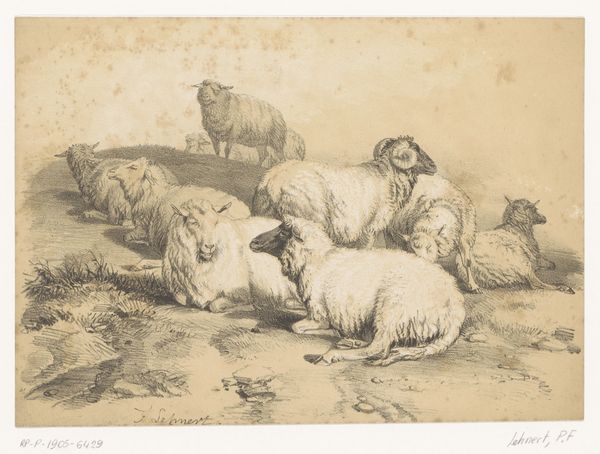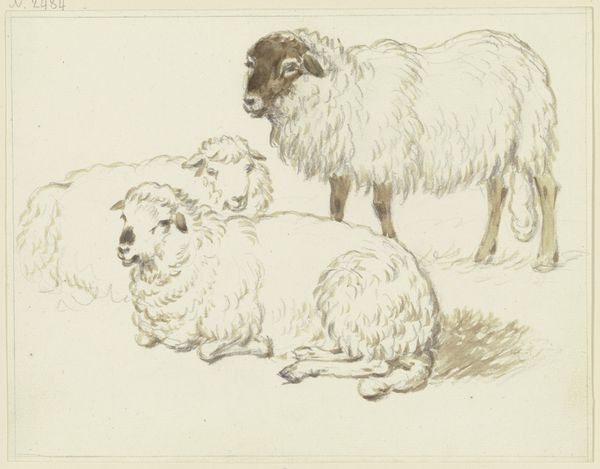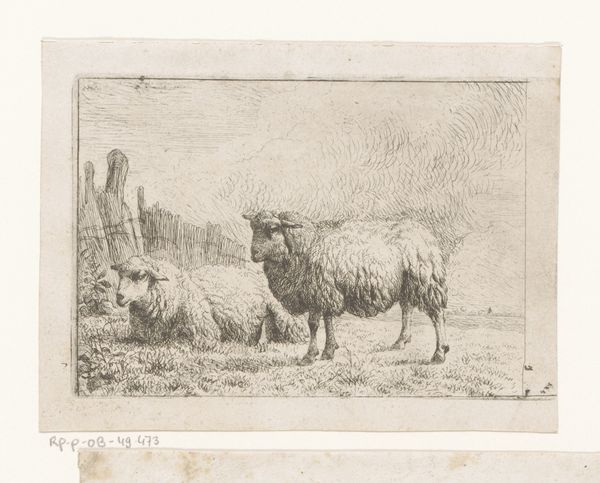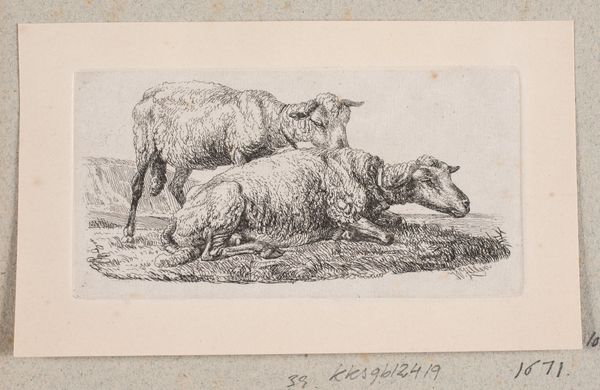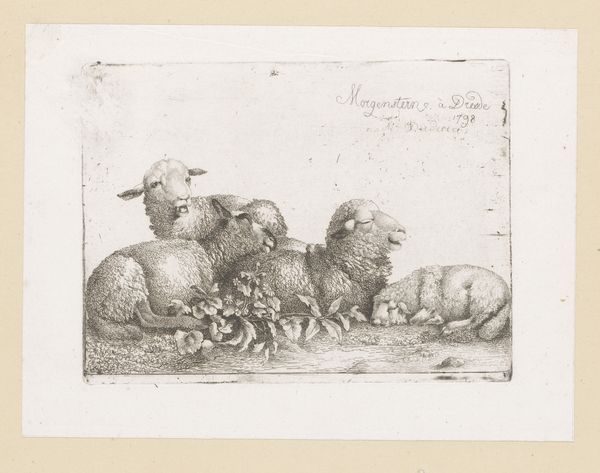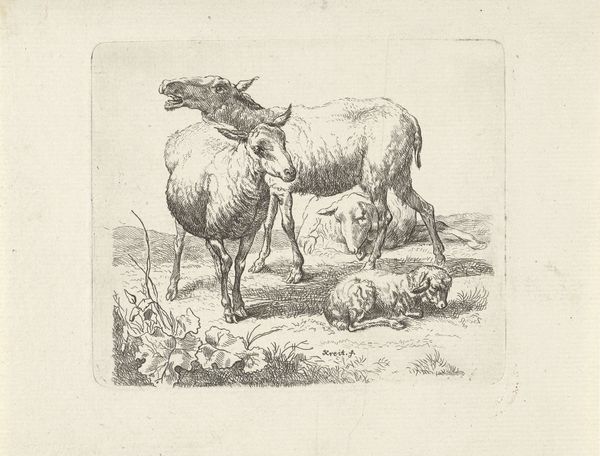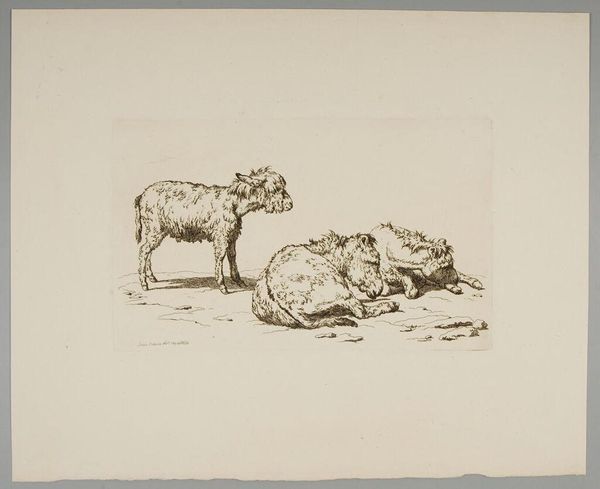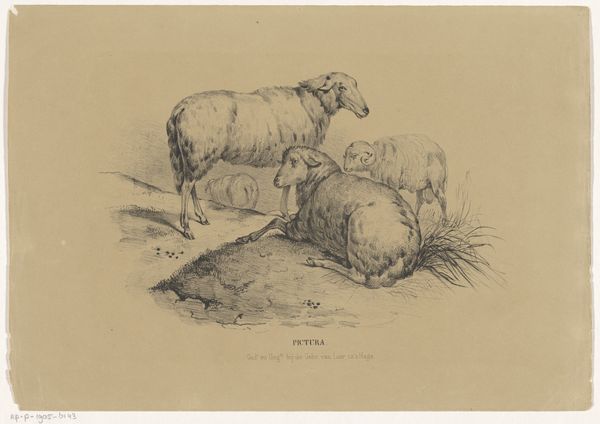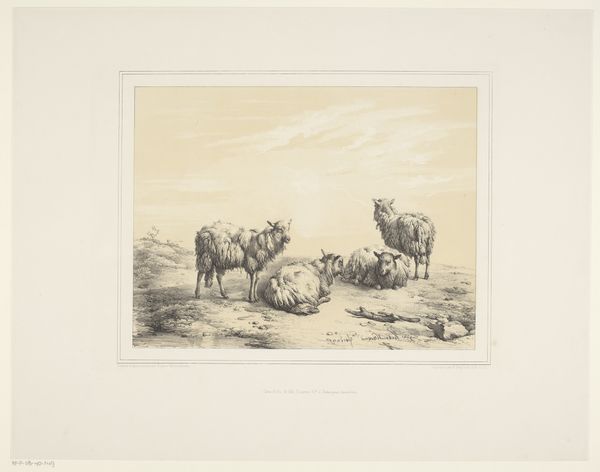
print, etching
# print
#
etching
#
landscape
#
genre-painting
#
realism
Dimensions: 118 mm (height) x 161 mm (width) (plademaal)
Curator: I am struck by the gentle serenity in this composition. A small flock of sheep rests in a pasture, rendered in fine lines of etching. Editor: Indeed. The print, known as "Får og lam," was created by A.P. Madsen in 1855. The artwork can be found at the SMK, or Statens Museum for Kunst. The level of detail Madsen achieved in capturing the sheep’s wool is quite impressive for an etching. Curator: The setting speaks to a wider conversation around the artistic expression of pastoral life during the 19th century. We see this subject appear frequently during this period. What symbols can we draw from the scene before us? Editor: Well, sheep, throughout art history, often symbolize innocence, gentleness, and community. The mother sheep and lambs certainly convey these ideas. This idyllic portrayal omits any hardship or challenges of agrarian existence, highlighting a romantic vision, perhaps? Curator: Precisely. I would argue that such images offered a form of reassurance in an era marked by rapid industrialization and social change. A scene that, even now, appeals as pure escapism. I find myself wondering about its contemporary audience and what messages about class it held then. Editor: That's interesting! I hadn't considered that aspect, but you're right. There is no shepherd or farmer visible. Are these sheep a signifier of Denmark's pastoral ideals, then? It reminds me of some biblical connotations, particularly a protective, maternal energy in the cluster of animals resting near the flowers. Curator: Yes, indeed! It would be productive to view it as an intersection of various visual ideas prevalent at the time, particularly within the wider artistic movement of realism. Editor: Madsen's etching does this beautifully—it captures the aesthetic essence of that time period through the simple imagery. Viewing artwork in collections provides this connection between artist and the societal undercurrent that affected and informed the work. Thank you, Madsen, for leaving behind the vision for future generations to enjoy.
Comments
No comments
Be the first to comment and join the conversation on the ultimate creative platform.
